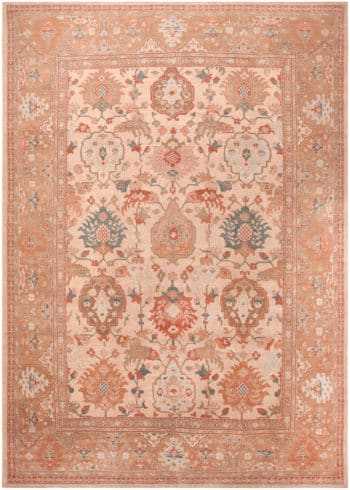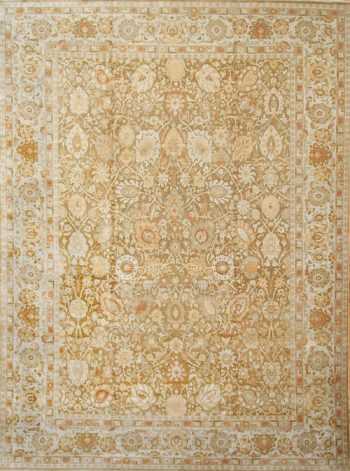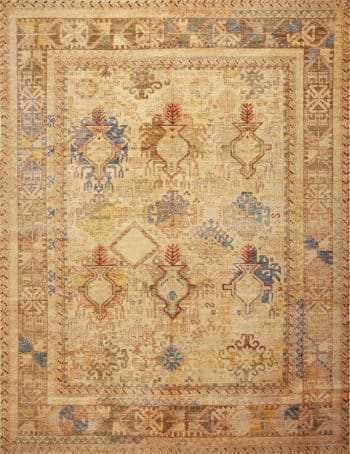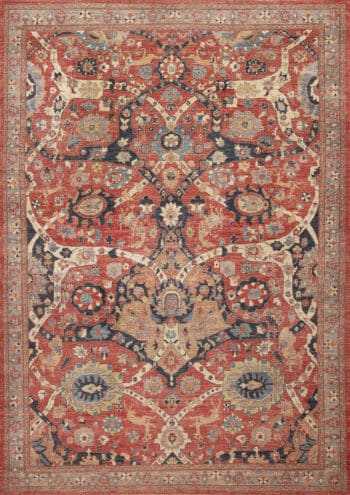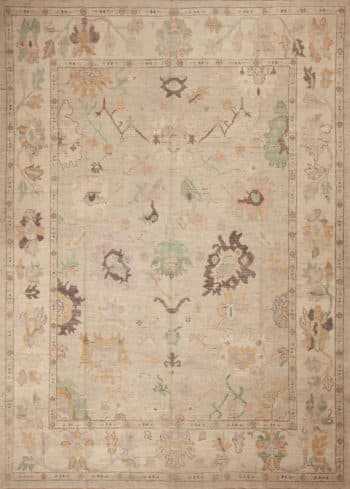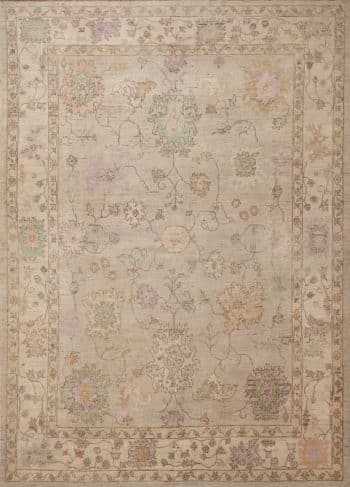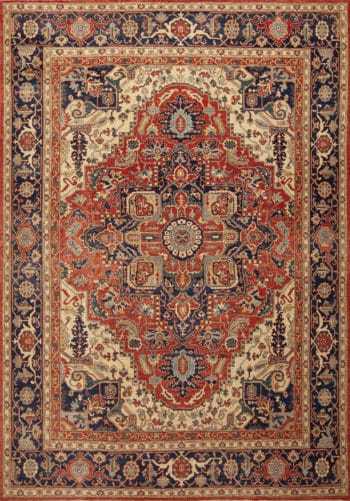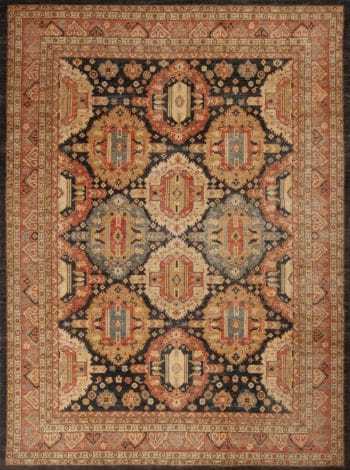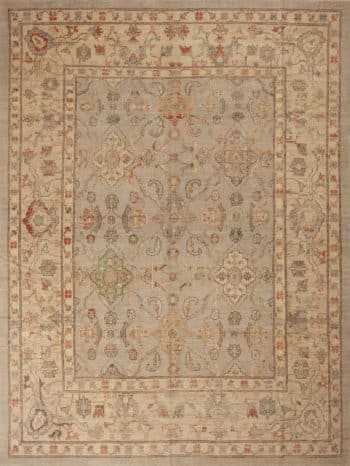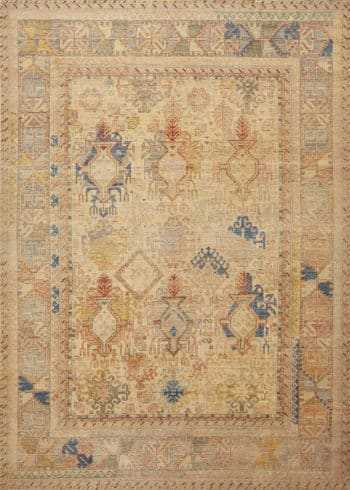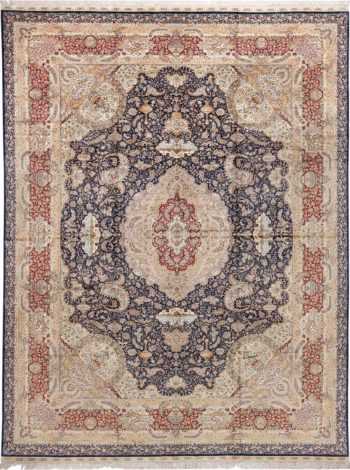Classic Rugs & Carpets Collection
Indulge in Sophistication: Our Classic Rugs & Traditional Carpet Collection
View our current collection of modern classic rugs:
Blue Oversized Modern Oriental Traditional Indian Agra Rug 72158
$29,400.00Size: 15 ft x 24 ft 9 in (4.57 m x 7.54 m)Ivory Large Scale Allover Design Modern Persian Sultanabad Rug 72160
$12,950.00Size: 12 ft 6 in x 17 ft 6 in (3.81 m x 5.33 m)Large Vibrant Bold Rustic Geometric Modern Tribal Contemporary Area Rug 11793
$14,308.00Size: 13 ft 5 in x 17 ft (4.09 m x 5.18 m)Large Modern Persian Tabriz Design Turkish Oriental Rug 41237
$12,950.00Size: 12 ft 2 in x 16 ft 10 in (3.71 m x 5.13 m)Large Modern Turkish Oushak Rug 72159
Size: 13 ft 10 in x 16 ft 6 in (4.22 m x 5.03 m)Modern Oriental Gallery Size Sultanabad Wide Hallway Runner Rug 44684
$5,880.00Size: 7 ft x 16 ft 4 in (2.13 m x 4.98 m)Contemporary Geometric Tribal Design Modern Rustic Area Rug 11778
Size: 13 ft 4 in x 16 ft 3 in (4.06 m x 4.95 m)Casual Brown Earth-Tone Color Floral Modern Oushak Design Hallway Runner Rug 11209
$3,570.00Size: 3 ft 9 in x 16 ft (1.14 m x 4.88 m)Tribal Animal Geometric Design Contemporary Modern Rustic Area Rug 11755
Size: 13 ft 4 in x 16 ft (4.06 m x 4.88 m)Rustic Large Scale Tribal Geometric Design Modern Area Rug 11719
$11,613.00Size: 11 ft 11 in x 15 ft 6 in (3.63 m x 4.72 m)Classic Modern Large Room Size Rustic Tribal Geometric Caucasian Design Rug 11720
$11,550.00Size: 12 ft 4 in x 15 ft (3.76 m x 4.57 m)Contemporary Modern Persian Animal Design Central Asian Oriental Area Rug 11659
Size: 10 ft 4 in x 14 ft 6 in (3.15 m x 4.42 m)Neutral Decorative Soft Pastel Color Room Size Modern Turkish Oushak Design Rug 11671
$9,380.00Size: 10 ft 4 in x 14 ft 4 in (3.15 m x 4.37 m)Tribal Moroccan Beni Ourain Design Modern Rustic Area Rug 11630
$9,100.00Size: 10 ft 2 in x 14 ft 2 in (3.1 m x 4.32 m)Rustic Classic Geometric Persian Heriz Design Modern Area Rug 11658
$8,470.00Size: 10 ft 4 in x 13 ft 10 in (3.15 m x 4.22 m)Neutral Tribal Floral Modern Turkish Oushak Design Area Rug 11602
$7,945.00Size: 9 ft 10 in x 13 ft 8 in (3 m x 4.17 m)Room Size Modern Turkish Rug With Persian Tabriz Design 41229
$6,160.00Size: 9 ft 11 in x 13 ft 3 in (3.02 m x 4.04 m)Classic Room Size Modern Rustic Persian Heriz Serapi Geometric Medallion Design Area Rug 11527
$6,895.00Size: 9 ft 1 in x 12 ft 9 in (2.77 m x 3.89 m)Rustic Tribal Geometric Persian Heriz Design Modern Room Size Rug 11526
$6,790.00Size: 9 ft 3 in x 12 ft 5 in (2.82 m x 3.78 m)Soft Grey Tribal Room Size Turkish Oushak Design Modern Area Rug 11547
$6,825.00Size: 9 ft 3 in x 12 ft 5 in (2.82 m x 3.78 m)Room Size Allover Casual Turkish Oushak Design Modern Area Rug 11548
$6,825.00Size: 9 ft 3 in x 12 ft 4 in (2.82 m x 3.76 m)Warm Cozy Rustic Geometric Tribal Design Modern Area Rug 11528
$6,713.00Size: 9 ft 1 in x 12 ft 4 in (2.77 m x 3.76 m)Cream Color Tribal Modern Turkish Oushak Design Area Rug 11549
$6,580.00Size: 9 ft 1 in x 12 ft 2 in (2.77 m x 3.71 m)Modern Animal Motif Silk Chinese Area Rug 49923
$18,200.00Size: 9 ft x 11 ft 9 in (2.74 m x 3.58 m)
What are Classic rugs?
“Classic rugs” typically refer to traditional or timeless rug designs that draw inspiration from classic or antique patterns. These area rugs often feature intricate details, elaborate motifs, and a rich color palette. The term “classic” in this context suggests rug styles and types that have stood the test of time and continue to be appreciated for their elegance and sophistication.
Classic rugs can be made from various materials, including wool, silk, cotton, or a combination of these.
The patterns may include floral designs, geometric shapes, central medallions, or other traditional motifs. These types of area rugs are often associated with a sense of luxury and are used to add a touch of refinement to interior spaces.
The specific characteristics of area rug styles that are more “classic” can vary based on cultural influences and the region where they are produced. Some well-known types of classic rugs include Persian rugs, Turkish rugs and Oriental rugs, each with its own distinctive features and design elements.
When choosing a rug that is classic, individuals often consider the overall aesthetic of their living space, the color scheme, and the desired level of formality. Whether placed in a living room, dining area, or bedroom, classic rugs can contribute to the overall ambiance and style of a room.
What are some of the most popular types of Classic rugs?
Several types of classic rugs have gained popularity over the years due to their unique designs, cultural significance, and craftsmanship.
Here are some of the most well-known classic types of rugs:
- Persian Rugs: Originating from Iran (formerly Persia), Persian rugs are renowned for their intricate patterns and high-quality craftsmanship. They often feature elaborate floral motifs, medallions, and vibrant colors. Some of the most popular types of Persian rugs include Isfahan, Kashan, and Tabriz rugs.
- Oriental Rugs: The term “Oriental rug” is broad and encompasses a variety of hand-knotted rugs from Asia, including Iran, Turkey, China, India and more. These rugs often feature intricate patterns and symbols, with rich, deep colors. They are known for their durability and craftsmanship.
- Turkish Rugs: Turkish rugs, particularly those rugs from regions like Anatolia, are celebrated for their geometric patterns and bold, vibrant colors. Kilim rugs, a type of flatwoven rug from Turkey, are also popular and known for their tribal rug designs.
- Afghan Rugs: Afghan rugs, particularly those from regions like Herat and Kabul, are characterized by their distinctive patterns and use of deep reds and blues. Afghan rugs are often hand-knotted by skilled artisans.
- Indian Rugs: Indian rugs are diverse, reflecting the country’s rich cultural heritage. They often feature intricate patterns, including floral and paisley motifs. Dhurrie rugs, a type of flat-weave rug, are also popular in India.
- Caucasian Rugs: Originating from the Caucasus region, these rugs feature bold geometric patterns and vibrant colors. The Caucasian rugs are known for their tribal and nomadic influences, with variations such as Kazak rugs and Shirvan rugs.
- Chinese Rugs: Chinese rugs are characterized by intricate designs, often featuring traditional symbols and patterns. They are known for their fine craftsmanship and can include materials like silk, wool, or a combination of both.
- Moroccan Rugs: Moroccan rugs, particularly those rugs by the Beni Ourain tribe, are known for their simple yet distinctive designs, often featuring geometric patterns and a neutral color palette. These rugs are popular in bohemian interior designs.
When choosing a classic rug, it’s essential to consider the style, color, and rug size that best complements the overall design of the room. Each type of classic rug has its own cultural and historical significance, making them not just functional but also valuable works of art.
Do classic rugs have specific colors?
Classic rugs can come in a wide range of colors, and the color palette often depends on the cultural and regional influences of the rug. However, there are some common color themes and preferences associated with classic rugs.
Here are a few general observations with regards to color:
- Rich Reds and Blues: Many classic rugs, including Persian and Oriental rugs, often feature rich red and deep blue colors. These colors are traditional and can be associated with royalty, wealth, and cultural significance.
- Earth Tones: Some classic rugs, especially those from tribal or nomadic rug weaving traditions, may feature earthy tones such as browns, greens, and beige. These colors often reflect the natural carpet dyes and materials used in the weaving process.
- Warm Golds and Yellows: Gold and yellow tones are also commonly found in classic rugs. These colors can add warmth to the overall design and are often used in conjunction with other rich hues.
- Neutral Tones: In contrast to vibrant and bold colors, certain classic rugs, such as Moroccan or Turkish rugs, may incorporate neutral color tones like ivory, beige, cream or gray. These colors can contribute to a more understated and versatile aesthetic.
- Contrasting Borders: Many classic rugs feature contrasting borders that frame the central design. These borders may incorporate a different color or a variation of the colors found in the main pattern.
- Subdued Pastels: Some classic rugs, particularly those from certain Indian or Chinese traditions, may incorporate softer pastel color tones. These can create a more delicate and elegant look.
The colors present in classic rugs can vary significantly based on the specific type of rug, its cultural origin, and the preferences of the weavers. Additionally, factors such as the type of dyes used (natural or synthetic) can impact the color palette.
When selecting a classic rug for a particular space, it’s advisable to consider the existing color scheme of the room, the desired atmosphere, and personal preferences. Classic rugs are versatile and can complement a wide range of interior design styles.
Do classic rugs have specific types of designs and patterns?
Yes, classic rugs are known for their distinct designs and patterns, often reflecting the cultural, regional, and historical influences of the areas where they are produced.
Here are some common types of designs and patterns found in classic rugs:
Floral Patterns: Many classic rugs feature intricate floral motifs. These designs can range from realistic depictions of flowers to stylized, abstract representations. Persian rugs, in particular, are known for their elaborate floral patterns.
- Geometric Patterns: Geometric designs are prevalent in classic and old world design area rugs, especially in tribal and nomadic styles. These patterns can include geometric shapes, such as diamonds, stars, hexagons, or octagons, arranged in repeating or symmetrical formations.
- Medallion Designs: Classic rugs often showcase a central medallion as a focal point. These medallions can be circular, hexagonal, or more complex in shape and are surrounded by complementary patterns.
- Herati (Fish) Design: The Herati pattern, also known as the fish design, is a common motif in classic rugs. It typically features a central diamond or floral medallion surrounded by stylized fish and leaves.
- Paisley Patterns: Paisley, or boteh, is a teardrop-shaped motif commonly found in classic rugs, especially in Persian and Indian designs. The paisley pattern has a rich history and is often associated with fertility and life.
- Mihrab Design: The mihrab design is inspired by the arch-shaped niche in Islamic architecture, indicating the direction of Mecca. This design is often found in prayer rugs and can be a central element or integrated into the overall pattern.
- All-Over Patterns: Some classic rugs feature an all-over pattern with a consistent design throughout the entire surface. This can include repeating motifs, such as flowers, vines, or geometric shapes.
- Kilim Designs: Kilim rugs, a type of flat-woven rug, often showcase bold geometric patterns and stripes. These designs are typically woven rather than knotted and are common in Turkish and other Middle Eastern traditions.
- Arabesque Patterns: Arabesque patterns, characterized by flowing and intricate lines, are often seen in Islamic art and can be found in rugs from regions influenced by Islamic culture.
- Tribal Motifs: Hand woven area rugs by nomadic or tribal communities often feature unique motifs and symbols that carry cultural significance. These can include animal designs, symbols of protection, or elements representing the weaver’s nomadic lifestyle.
When choosing a classic rug, individuals often consider the specific rug patterns and motifs that resonate with their tastes and complement the overall aesthetic of their living space.
The diversity of designs and patterns in classic rugs allows for a wide range of choices to suit various preferences and interior design styles.
What does it mean when someone is shopping for modern contemporary classic rugs?
When someone is shopping for “modern contemporary classic rugs,” it suggests a desire to source and find rugs that blend elements of classic, traditional styles with modern and contemporary design aesthetics. This combination allows individuals to have a piece that has a timeless quality while still fitting into the current design trends.
Let’s break down each rug design element:
- Modern: Modern design refers to a style that emerged in the early to mid-20th century. Modern rugs often feature clean lines, simple geometric shapes, and a focus on functionality. Colors in modern rugs can range from neutral and monochromatic to bold and vibrant.
- Contemporary: Contemporary design is an ever-evolving style that reflects current trends. It can incorporate a wide range of influences and doesn’t adhere to a specific time period. Contemporary rugs may feature innovative materials, unconventional shapes, and a mix of different design elements.
- Classic: Classic, in the context of rugs, refers to traditional designs that have stood the test of time. These designs often include intricate patterns, motifs, and a rich color palette. Classic rugs may be inspired by the antique rugs and vintage rugs which were created by various cultural traditions, such as Persian, Turkish, or Oriental designs.
By combining these three terms, “modern contemporary classic rugs,” someone is likely looking for rugs that merge the elegance and timeless appeal of classic designs with the freshness and innovation of modern and contemporary styles. In interior design, the more classic area rugs can serve as focal points in a room, adding sophistication while also contributing to a modern and up-to-date overall design.
When shopping for such rugs, individuals might come across pieces that incorporate classic motifs with a modern color scheme, use contemporary materials and textures while maintaining traditional weaving techniques, or feature a classic pattern presented in a more abstract or minimalist manner. It’s a way of bringing the best of both worlds into interior design – classic charm with a modern twist.
What is the difference between “traditional” and “classic” in area rugs?
The terms “traditional” and “classic” in the context of area rugs are often used interchangeably, and their meanings can overlap. However, there can be subtle distinctions in how these terms are applied in the world of interior design and rug styles.
Traditional Area Rugs:
- Time-Honored Designs: Traditional rugs typically feature designs and patterns that have been passed down through generations. These designs often draw inspiration from specific cultural or historical influences.
- Rich Patterns and Motifs: Traditional rugs are known for their intricate patterns, elaborate motifs, and a sense of symmetry. These designs can include floral patterns, medallions, borders, and other ornate details.
- Classic Color Palette: Traditional rugs often showcase a classic color palette that includes rich, deep colors such as reds, blues, greens, and golds. These colors contribute to the overall sense of opulence and timelessness.
- Cultural Influences: Traditional rugs may be associated with specific cultural traditions, such as Persian, Turkish, Indian, or Oriental designs. Each cultural tradition brings its own unique motifs and characteristics.
Classic Area Rugs:
- Timeless Elegance: Classic rugs convey a sense of timeless elegance and sophistication. They are designed to stand the test of time and often exude a refined and formal aesthetic.
- Versatility in Design: Classic approaches to the design can encompass a variety of traditional designs, but they may also include more broadly timeless and versatile patterns. The emphasis is on creating a piece that transcends specific trends and remains stylish over the years.
- Cultural Diversity: Like traditional rugs, rugs that are considered “classic” in look, may be influenced by various cultural styles, but they can also incorporate a broader range of inspirations, allowing for more flexibility in design.
While traditional rugs often emphasize specific cultural or historical designs, classic rugs have a broader scope that can include a variety of timeless and elegant patterns. Ultimately, the distinction between “traditional” and “classic” may vary depending on how these terms are used by manufacturers, retailers, and designers in the context of their specific collections or product descriptions. It’s advisable to consider the specific characteristics of a rug and its design elements when making a selection based on terms like “traditional” or “classic.”


